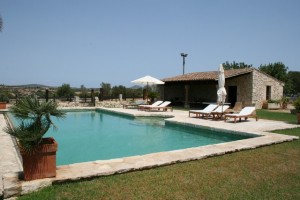A Nationalist stronghold at the outset of the Spanish Civil War, Majorca was put through an amphibious landing, on August 16, 1936, directed at driving the Nationalists from Majorca and reclaiming the area to the Republic. Even though Republicans heavily outnumbered their opponents and were able to push 12 kilometres inland, superior Nationalist aviation mainly provided by Fascist Italy forced the Republicans to retreat also to leave the city completely by September 12. Those events became referred to as Battle of Majorca.
 For the remainder of the civil war the region was developed as being a base for your Nationalist navy and airforce, who mounted raids on the Spanish mainland.
For the remainder of the civil war the region was developed as being a base for your Nationalist navy and airforce, who mounted raids on the Spanish mainland.
Since the 1950s, the arrival of mass tourism has transformed this tropical isle right into a centre of attraction for foreign visitors and attracting workers from mainland Spain. The boom in tourism caused Palma to grow significantly. In 1960, Majorca received 500,000 visitors, when it is in 1997, it received 6,739,700. In 2008, 22,832,865 passengers passed throughout the Palma de Mallorca Airport having an additional 1.5 million arriving by sea.
These days, urban redevelopment, within the so-called Pla Mirall (English “Mirror Plan”), attracted teams of immigrant workers from outside the European Union, especially from Africa and South America.
Majorca has two mountainous regions each about 70 km long. These occupy the north-western (Serra de Tramuntana or Tramuntana range) and eastern thirds in the island. The biggest peak on Majorca is Puig Major (1,445 m) in the Serra de Tramuntana. Since this is really a military zone, the neighbouring peak at Puig de Massanella may be the highest accessible peak (1,364 m). The northeast coast comprises two bays: the Badia de Pollença along with the larger Badia d’Alcúdia. The northern coast is rugged and possesses many cliffs. The central zone extending from Palma is usually flat fertile plain referred to as Es Pla. The island has a number of caves both above and below sea-level. Urlaub Fincas Mallorca is a wonderful means of spending wonderfult time on Majorca. Two from the caves above sea-level also contain underground lakes and they are prepared to take tours. Are both near the eastern coastal town of Porto Cristo, the Coves dels Hams as well as the Coves del Drach. It is the largest by area and 2nd most populated island of Spain (Tenerife inside the Canary Islands). The climate is Mediterranean, with markedly higher precipitation within the Serra de Tramuntana. Summers are hot inside plains and winters mild to chill, getting colder within the Tramuntana range; in this particular the main island brief installments of snow during the winter usually are not unusual.
The two small islands off the coast of Majorca: Cabrera (southeast of Palma) and Dragonera (west of Palma).
0 Comments